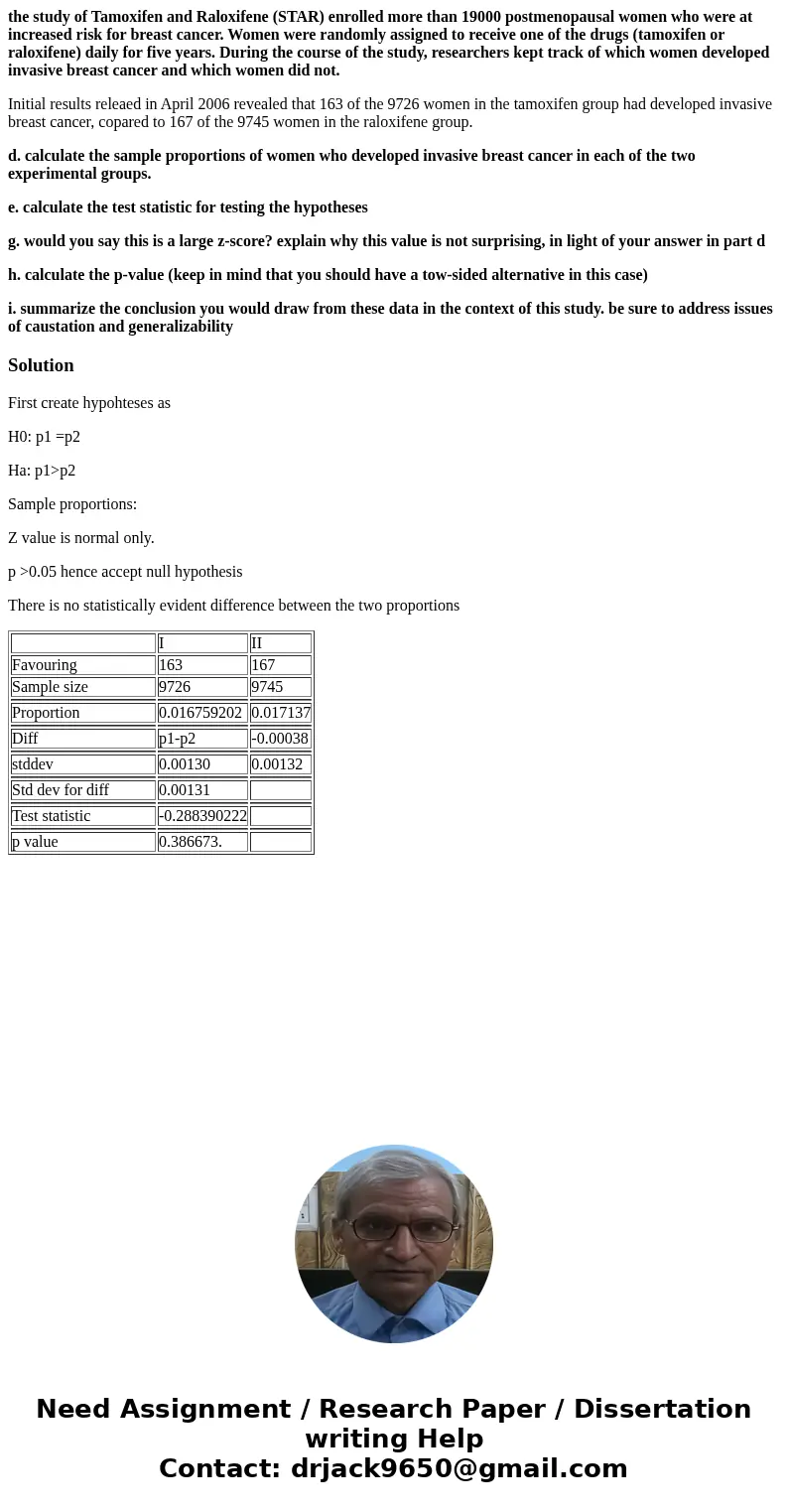the study of Tamoxifen and Raloxifene STAR enrolled more tha
the study of Tamoxifen and Raloxifene (STAR) enrolled more than 19000 postmenopausal women who were at increased risk for breast cancer. Women were randomly assigned to receive one of the drugs (tamoxifen or raloxifene) daily for five years. During the course of the study, researchers kept track of which women developed invasive breast cancer and which women did not.
Initial results releaed in April 2006 revealed that 163 of the 9726 women in the tamoxifen group had developed invasive breast cancer, copared to 167 of the 9745 women in the raloxifene group.
d. calculate the sample proportions of women who developed invasive breast cancer in each of the two experimental groups.
e. calculate the test statistic for testing the hypotheses
g. would you say this is a large z-score? explain why this value is not surprising, in light of your answer in part d
h. calculate the p-value (keep in mind that you should have a tow-sided alternative in this case)
i. summarize the conclusion you would draw from these data in the context of this study. be sure to address issues of caustation and generalizability
Solution
First create hypohteses as
H0: p1 =p2
Ha: p1>p2
Sample proportions:
Z value is normal only.
p >0.05 hence accept null hypothesis
There is no statistically evident difference between the two proportions
| I | II | |
| Favouring | 163 | 167 |
| Sample size | 9726 | 9745 |
| Proportion | 0.016759202 | 0.017137 |
| Diff | p1-p2 | -0.00038 |
| stddev | 0.00130 | 0.00132 |
| Std dev for diff | 0.00131 | |
| Test statistic | -0.288390222 | |
| p value | 0.386673. |

 Homework Sourse
Homework Sourse